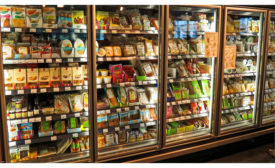Refrigeration
End the California Drought for Refrigerant Incentives
The program, part of S.B. 1013, already has a role model across town
Read More
SNAP Decisions: California’s Refrigerant Saga Continues
Predicting costs, plugging leaks, and incentive uncertainty mark early 2019 efforts
Read More
Condensers Can Offer Valuable Insights Into System Operation
Measuring CTOA can help pinpoint problems in a refrigeration system
Read More
Commercial Refrigeration Requires Strict Leak Prevention Programs
Comprehensive refrigerant management programs can save money, reduce hazards
Read More
One Compressor Does Not Equal Another: Verify Before Replacing
When choosing a new model, check on a few things first
Read More
ASHRAE to Host Webcast on the Future of Refrigerants
Taking place April 17 and 18
April 1, 2019
Copyright ©2024. All Rights Reserved BNP Media.
Design, CMS, Hosting & Web Development :: ePublishing












